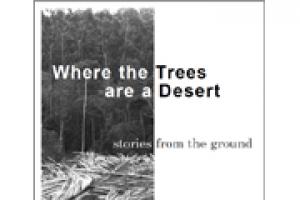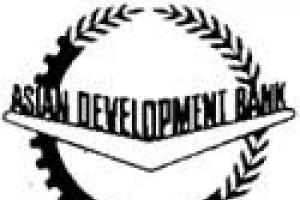On 1 December 2003, SmartWood suspended the Forest Stewardship Council certification of two of Forest Industry Organisation’s teak plantations. SmartWood is accredited by FSC to assess whether forestry operations conform to FSC’s principles for well managed forests or plantations.
Large-Scale Tree Plantations
Industrial tree plantations are large-scale, intensively managed, even-aged monocultures, involving vast areas of fertile land under the control of plantation companies. Management of plantations involves the use of huge amounts of water as well as agrochemicals—which harm humans, and plants and animals in the plantations and surrounding areas.
Bulletin articles
13 December 2003
Bulletin articles
13 December 2003
The Plantar forestry company located in the State of Minas Gerais has large eucalyptus plantations in the zone, established at the expense of evicting the local populations. They were also established at the expense of the typical forest in the zone (the “cerrado”), and the trees were converted into charcoal to supply the iron and steel industry and replaced by eucalyptus, planted for the same objective.
Bulletin articles
13 December 2003
On 12 December, the Matte (CMPC companies), Angelini (Arauco) forestry groups and a number of Chilean and US environmental NGOs signed an agreement (see http://www.wrm.org.uy/countries/Chile/article2.html ) whereby the companies have agreed to conserve the areas of native forest existing on their properties – representing 2.8% of the total surface of the native forests in the country – and not replace them by tree plantations.
Bulletin articles
13 December 2003
In 1998, the author Joe Broderick finished his research on the Smurfit Carton de Colombia company, publishing his book “El imperio de cartón: impacto de una multinacional papelera en Colombia” (The Cardboard empire: the impact of a multinational paper company in Colombia). In this book he provides details of the serious social and environmental impacts caused by the activities of a branch of the Irish transnational company, Jefferson Smurfit in that country.
Other information
30 November 2003
By Carbon Trade Watch, TNI/FASE
This collaorative brieing gives an insight into the history of monoculture eucalyptus plantations inBrazil and their impacts on local people and the environment. It also explores the new finances made available by the World Bank that allows the expansion of these destructive plantations through the carbon market.
Download full document here
Bulletin articles
14 November 2003
The World Bank Prototype Carbon Fund’s (PCF) Plantar project has been heavily criticized by NGOs and civil society movements ever since it first emerged as the first industrial eucalyptus tree plantation to claim carbon sink credits from the Kyoto Protocol’s Clean Development Mechanism. The Plantar project involves 23,100 hectares of monoculture eucalyptus plantations for the production of charcoal, which will be used in pig iron production.
Bulletin articles
14 November 2003
The Clean Development Mechanism (CDM) of the Kyoto Protocol under the United Nations Framework Convention on Climate Change may be totally useless to address climate change, but it may prove to be good business for some parties. The assumption is that in return for investment in a project that cuts or reduces emissions in a southern country, companies will earn certified emission reductions (CERs) that industrialized countries may use to meet Kyoto Protocol commitments.
Bulletin articles
14 November 2003
The Asian Development Bank (ADB) has big plans for plantations in Laos. World Rainforest Movement has obtained a leaked report of a recent ADB mission to Laos which describes how the Bank hopes to attract international pulp and paper companies to invest in Laos.
Over the past ten years, the ADB has funded an area of approximately 12,000 hectares in Laos through its $11.2 million “Industrial Tree Plantations Project”. Under its planned “Forest Plantations for Livelihood Sector Project” the Bank intends to finance 30,000 hectares of plantations.
Other information
22 October 2003
By Chris Lang, published in "Pulping the Mekong"
In December 1993, the Asian Development Bank agreed a US$11.2 million loan for an "Industrial Tree Plantations Project" in Laos. Phase 1 of the project, which ran until 2003, aimed to plant 9,600 hectares with fast-growing tree plantations. Phase 2 of the project, "Tree Plantations for Livelihood Improvement" is currently under preparation and will go to the ADB's Board for a decision on funding in October 2003. Under phase 2 the ADB plans to plant a further 10,000 hectares.
The project raises several important concerns:
Bulletin articles
17 October 2003
Timberwatch, a coalition of environmental NGOs and individuals, has renewed an appeal made during the World Summit on Sustainable Development in 2002, calling on the South African government, as well as on the timber industry, to halt the planting of new industrial timber plantations in naturally vegetated areas, especially grasslands.
Bulletin articles
17 October 2003
Plantation of exotics --rubber, acacia and eucalyptus in particular-- is one major factor that has changed the Modhupur sal forest (Shorea robusta) for ever, with severe consequences for the ethnic communities --Garos and Koch-- who have lived in the forest for centuries.
With loan money from the Asian Development Bank and the World Bank in particular, the government has actually established plantations of alien species all over the public forestland. Except for the Sundarban, only fragments of native forests remain in Bangladesh.
Bulletin articles
17 October 2003
The Kali Bachao Andolan (Movement to Save the Kali) made a dramatic move against the serious pollution that the West Coast Paper Mills (WCPM) is causing to the Kali River by discharging untreated effluents. For long local people have suffered enormously from the pollution as they were repeatedly threatened with job losses if WCPM was pressurized to be environmentally responsible.


